Cracks in the System
Cybersecurity threats don’t always kick the door down—sometimes, they slip in through the cracks. This month, we’re spotlighting three subtle but serious security risks that could be undermining your defences right now.

We are still in the early days of blending AI technology with design applications. 2022 saw massive strides in image generation from tools like Midjourney and DALL-E 2 and the render engine Veras being used time and time again to put a new spin on the out-of-the-box model that comes preinstalled with Revit.
The latest offering from Autodesk, Spacemaker, is an AI tool for early urban design and analysis with a slightly different approach from the AI perspective. Referred to as “AI-on-the-shoulders” by its developers, Spacemaker assists urban designers, planners, and property developers to quickly mock up and evaluate multiple building configurations on a given site. It can take into account wind, solar, view quality and a range of other metrics to guide the designer towards an optimal solution.
The tool itself is entirely web based. A project is commenced by selecting a site from an interface resembling Google Earth. After the selection is confirmed, your site is generated in a matter of seconds ready for work to begin.
One of the key features of Spacemaker is its ability to generate 3D building designs automatically, based on a set of parameters and goals defined by the user. This can be considered the ‘broad brush’ approach where in a short amount of time multiple configurations can be generated and quickly compared and evaluated.
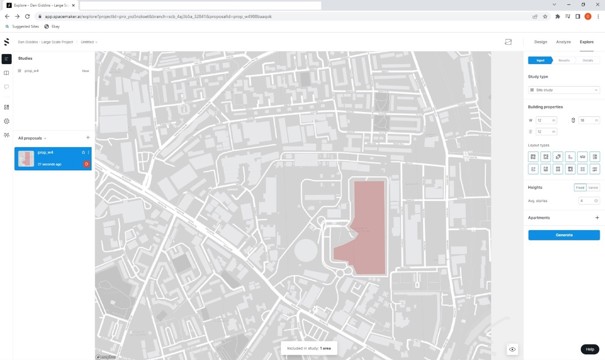
Sample site in London – The ‘Explore’ mode allows the fast generation of multiple site configurations. The red zone denotes the proposed building plot.
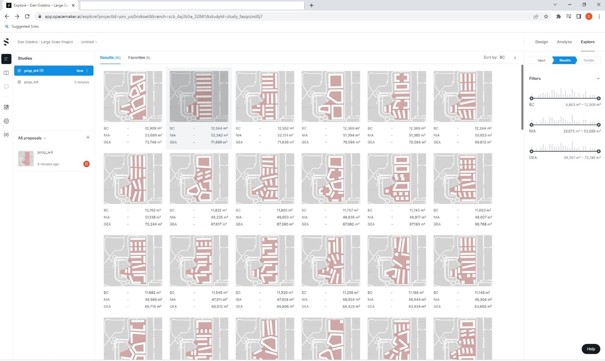
In less than 30 seconds Spacemaker has generated 95 proposals for this site.
The above site study has been generated by Spacemaker using user inputs for building size (height, width, minimum building margin), specified layout formations and number of stories. The user can select any of these studies as the basis for a design moving forward and use Spacemakers analysis capabilities to further optimise the site.
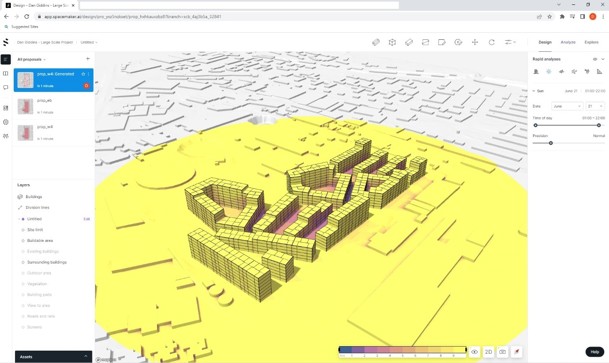
Solar analysis of one of the generated proposals
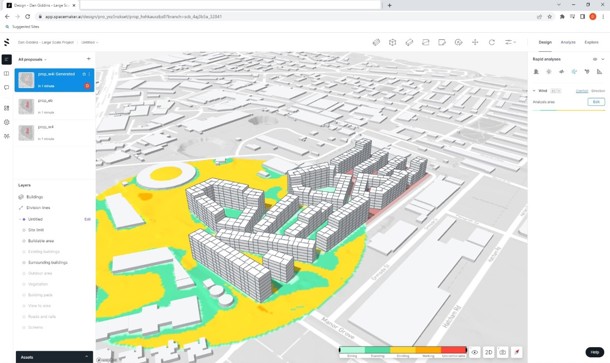
Wind analysis of the generated proposal
The AI generation in Spacemaker acts as a ‘kick-off’ for a site proposal. After an iteration has been chosen, the user is able to manually refine the design. This can be done natively in Spacemaker or the geometry and site can be exported to a third party application like Revit and imported back.
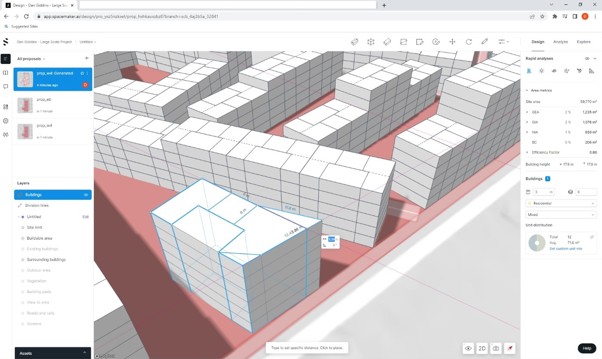
Spacemaker has an easy-to-use interface for editing geometry, which lends itself well to the type of early schematic design it is intended for. Those accustomed to using 3D packages like Formit and Sketchup will have no problem getting accustomed to the tool. The schematic buildings that Spacemaker generates can be converted to polygon buildings allowing the creation of more custom shapes.
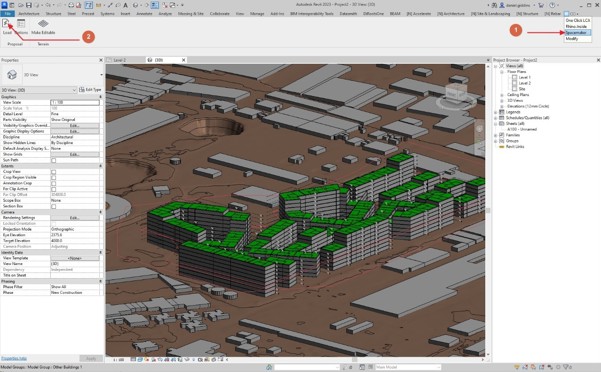
Proposals generated in Spacemaker can be sent directly to Revit on the user’s desktop. This is achieved using a plugin, free to download from the Spacemaker website. An advantage of using this method, is that Spacemaker transforms the native geometry into properly categorised Revit objects, adds levels and grid lines and brings in the topography and existing buildings.
It’s an exciting time to be a part of the Spacemaker journey. This application comes with a vast array of tools for design, exploration and analysis which will be explored in greater depth in future blog posts.
Cybersecurity threats don’t always kick the door down—sometimes, they slip in through the cracks. This month, we’re spotlighting three subtle but serious security risks that could be undermining your defences right now.
As 2025 comes to a close, we’re looking back at some of the most impactful cyber threats of the year and more importantly, what they reveal about the challenges ahead. From ransomware tactics to AI-driven phishing and risky app integrations, this round-up highlights where businesses have been most vulnerable and how you can strengthen your defences in 2026.
Learn what Product Lifecycle Management (PLM) is and how it helps teams manage product data, processes, and collaboration across the lifecycle. Discover the key benefits and PLM tools driving innovation.
